Videos by Eric Parkins
A hybrid control systems architecture of the Brain/Mind is presented, in which the cerebellum and... more A hybrid control systems architecture of the Brain/Mind is presented, in which the cerebellum and cerebrum cooperate as analog and digital computers in learning based homeostatic control. From a psychological perspective, Kahneman's System-1 type thinking (analog/naturomorphic) is largely supported by the cerebellum, whereas System-2 type thinking (digital/abstract) is largely supported by the cerebrum.
The architecture provides a framework for a principled integration of the three major branches of psychology, From Skinner's behaviourist theory, through Piaget's cognitive/developmental psychology, to Freud's psychodynamic psychology of the unconscious and dreaming.
A detailed explanation of the architecture, addressing the important role of the dialogue between the cerebellum and cerebrum in psychological processes and neuropsychiatric disorders is provided in:
'Cerebellum and Cerebrum in Homeostatic Control and Cognition: A Systems Approach to an Integrated Psychology' Routledge. 6 views
Books by Eric Parkins
Revised, updated & extended, as 'A Systems Approach to an Integrated Psychology' Routledge, (2021)
Cerebellum and Cerebrum in Homeostatic Control and Cognition: A Systems Approach to an Integrated Psychology., 2021
A whole-brain neuropsychology in which the cerebellum and cerebrum operate in a complementary man... more A whole-brain neuropsychology in which the cerebellum and cerebrum operate in a complementary manner as equal partners in a hybrid system for the learning based cognitive control of behaviour. It provides a neurocognitive architecture based on an integration of: 1) the biological process of homeostasis; 2) the theoretical principles of control and accompanying information representation and processing requirements; 3) a wide range of data and theory concerning the structure, development, and function of the brain; and, 4) a wide range of data and theory concerning various psychological processes from within behaviourist, cognitive/ developmental, and psychodynamic domains.
Book Chapters by Eric Parkins

Cerebellum and Cerebrum in Homeostatic Control and Cognition: A Systems Approach to an Integrated Psychology, 2021
Its time for a paradigm shift in psychology, away from an excessively cerebral perspective, towar... more Its time for a paradigm shift in psychology, away from an excessively cerebral perspective, towards a more balanced and wholistic psychology that embraces the cognitive cerebellum. Out now, this new book presents a groundbreaking hybrid-brain psychology, proposing that the cerebellum and cerebrum operate in a complementary manner as equal cognitive partners in learning based control. It synthesizes contemporary neuroscience and psychology in terms of their common underlying control principle, homeostasis, and provides and integrated description of a range of psychological phenomena and processes in terms of an original neuropsychological architecture. It is relevant to neuropsychology, cognitive psychology, clinical psychology, and neuroscience based perspectives on educational psychology and psychotherapy. I have attached a link to a Google Play Book free viewing of the first 29 pages of the e-book. This includes the 'Preview' (p.11-13) and the 'Introduction' (p.14-21), which together provide more detail of the book's content.

A Systems Approach to an Integrated Psychology, 2021
Chapter 8, Brain-Mind: An Integrated Architecture An integrated three tier neuropsychological arc... more Chapter 8, Brain-Mind: An Integrated Architecture An integrated three tier neuropsychological architecture for learning based control of homeostasis is presented, with the cerebellum supporting System-1 type thinking, and the cerebrum supporting System-2 type thinking. The integration is accomplished by mapping the theoretical architecture of the mind, developed from a combination of AI, cybernetics, and psychology literature, onto a biological architecture of the brain, developed from a range of neuroscience literature. This mapping is based on a correspondence of the two architectures in terms of: 1) information representation and processing characteristics; 2) order of development and hierarchical arrangement of control systems. The core three tier neuropsychological architecture is elaborated to accommodate the evolutionary subdivision of the cerebellum and cerebrum into archi/paleo-cortical (limbic), and neo-cortical levels, resulting in a five component architecture. This, in turn, is elaborated to accommodate hemispheric lateralization of function within the cerebellum and cerebrum, resulting in a seven component architecture. It is proposed that these neuropsychological architectures may serve as frameworks for systematically considering various psychological phenomena, in terms of the balanced contributions of the cerebellum, cerebrum, and cerebellum-cerebrum interaction. It is also proposed that the architectures may provide frameworks for systematically considering the symptoms of various mental disorders, in terms of the imbalanced contributions of the cerebellum, cerebrum, and cerebellum-cerebrum interaction. Click the link to a Google Play Book free viewing of the first 29 pages of the e-book. This includes the 'Preview' (p.11-13) and the 'Introduction' (p.14-21), which together provide more detail of the book's content.

Cerebellum and Cerebrum in Homeostatic Control and Cognition: A Systems Approach to an Integrated Psychology, 2021
It is proposed that the neuropsychological architecture provides a framework for a principled int... more It is proposed that the neuropsychological architecture provides a framework for a principled integration of the three major branches of psychology, from Skinner's behaviourist theory, through Piaget's cognitive and developmental psychology, to Freud (and Jung's) psychodynamic psychology of the unconscious, in terms of their common underlying principle: homeostasis. This chapter presents psychological data and theory regarding a number of fundamental psychological processes and phenomena: consciousness and self; unconscious mind; emotion; self-monitoring and psychological self-control; memory, recall, and infantile amnesia; and, cognitive development. Where appropriate, it also presents neurological literature relating to these psychological processes and phenomena, including that pertaining to cerebellar function. The contributions to these processes and phenomena, made by the cerebellum, as the neural substrate of System-1 type thinking, and by the cerebrum, as the substrate of System-2 type thinking, are explained in terms of the information representation/processing and control features of the neuropsychological architecture. This consitutes an integration of various branches of psychology at a more detailed level. Also, by the incorporation of human psychology, the skeleton of the architecture is fleshed out and is brought to life. The chapter concludes with a speculative description of the qualities of the mind of the cerebellum, and the proposal that the cerebellar mind corresponds to the Freudian primary process unconscious system. Chapter 10, Brain-Mind Architecture and an Integrated Psychology. In: Click the link to a Google Play Book free viewing of the first 29 pages of the e-book. This includes the 'Preview' (p.11-13) and the 'Introduction' (p.14-21), which together provide more detail of the book's content.
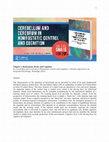
Cerebellum and Cerebrum in Homeostatic Control and Cognition, 2021
The characteristics of the operation of brain/mind can be described in terms of its most fundamen... more The characteristics of the operation of brain/mind can be described in terms of its most fundamental biological purpose, homeostasis. The description begins with an explanation of innate level homeostasis in terms of control theory. The basic features of a control loop are depicted by a box and arrow diagram. An important feature of the control loop is control error, which is the driving force for behavioral response. Innate level homeostasis can be extended systematically by the hierarchical addition of a learning based level of control. The learning based level provides for allostatic control. From the perspective of behaviourism, the learning based level is simply a 'black box', with stimulus input and response output. From a cognitive perspective, the 'black box' can store, represent, and process internal models of stimulus-response-consequence information. Considered from the biological perspective of homeostasis, the primary function of cognition is its contribution to the control of equilibrium between the organism and its environment. This depends on an adequate correspondence between the internal model and the external world. If the internal model does not accurately represent the external environment, then it will result in cognitive error, and will fail in its regulatory role. Within cognitive development, there must therefore be an error minimization process that actively modifies the internal models to enable more accurate predictions of the environment. Cognitive error is the driving force for cognitive development.
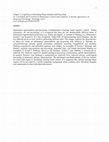
Information representation and processing is fundamental to learning based cognitive control. Wit... more Information representation and processing is fundamental to learning based cognitive control. Within cybernetics, AI, and psychology, it is recognised that there are two fundamentally different forms of information representation/processing (e.g. analog and digital), or systems of thinking (e.g. Khaneman's System-1 and System-2). It is also recognized, within both AI and psychology based literature, that the two different forms are best suited to performing different tasks. This chapter explores the characteristics of these two forms of information representation and processing with reference to literature on: connectionist-type systems, gestalt psychology, analogical reasoning, metaphorical and similarity thinking, sensorimotor and embodied cognition, and, imagery (as exemplars of System-1 thinking); and, abstract, symbolic representation and processing, sequential logic, and formal operational thinking (as exemplars of System-2 thinking). Based on the literature, System-1 type thinking is summarized as: relatively fast, relatively imprecise, parallel-analogical processing of polysensory gestalt representations. In contrast, System-2 type thinking is summarized as: relatively slow, relatively precise, serial-logical processing of unisensory abstract representations. The advantages and disadvantages of the two systems are noted with regard to facilitating learning based control. It is suggested that optimal learning based control will be provided by a hybrid computing arrangement which combines their individual strengths and compensates for their individual deficiencies.
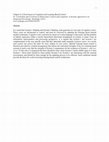
It is noted that System-1 thinking and System-2 thinking, each generates its own type of cognitiv... more It is noted that System-1 thinking and System-2 thinking, each generates its own type of cognitive errors. These errors are detrimental to control, and must be corrected by updating the learning based internal models (schemata). Cognitive error correction by means of a metalanguage is discussed, and the problem of infinite regression within a strictly hierarchical functional arrangement of systems is noted. From an information representation and processing perspective, it is argued that System-1 and System-2 are complementary in the very specific sense that they inherently make mutually exclusive errors. As a result, each system can correct the other for error, despite its own errors. Optimal learning based control is therefore provided by a hybrid arrangement that utilises the individual strengths of the two learning based systems in such a way that the strength of System-2 compensates for the weakness of System-1, and viceversa. To this end, it is proposed that there should be times when System-2 cannot inhibit input to it from System-1. These times should be when neither System-2 nor System-1 are interacting with the external environment, and should be often enough for the updating process to be efficient. Such conditions should provide the basis for a self-correcting learning based control architecture.
The structure of the brain is considered in terms of its three most basic structures: brainstem, ... more The structure of the brain is considered in terms of its three most basic structures: brainstem, cerebellum, and cerebrum. The brainstem is responsible for innate level reflexive homeostatic control. Learning based control of homeostasis is facilitated by a nested hierarchy of cerebellar and cerebral action loops. The brainstem also controls information flow for cerebellar operations, cerebral operations, and communication between the cerebellum and cerebrum. The thalamus, and the brainstem neurotransmitter/ modulator systems, have particularly important roles in controlling information flow, including that which involves interaction of the cerebellum and cerebrum. Operational unfoldment of the hierarchical organization of learning based control and cognition, depends on neural development.
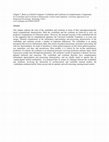
This chapter explores the roles of the cerebellum and cerebrum in terms of their neurophysiologic... more This chapter explores the roles of the cerebellum and cerebrum in terms of their neurophysiologically based computational characteristics. Both the cerebellum and the cerebrum are believed to carry out predictive computations of a Bayesian nature. However, the neuronal structure of the cerebellum has led to the suggestion that its computational signature, the Universal Cerebellar Transform, is in some way unique. Detailed consideration of the information representation and processing characteristics of the cerebellum and cerebrum reveals a number of important differences. The cerebellum is an analog perceptron that receives multisensory input, that carries out pattern processing, associative processing, but with low discrimination. Its mode of operation is whole pattern/sequence-in and whole pattern/sequenceout, immediate, real time, and unconscious. Most notably, it is critical for fast on-line multisensory prediction. In contrast, the cerebrum is an analytical processor receiving unisensory primary input, which it processes serially and with high discrimination. The cerebrum's mode of operation is abstract, bit-wise, planned (delayed) and conscious. The cerebellum and cerebrum therefore have complementary information representation and processing characteristics, and are ideally suited to operate like an 'analog-digital' hybrid combination. It is proposed that, by means of a dialogue between the cerebellum and cerebrum, involving the interaction of cerebrocortical and cerebellar internal models, the 'cerebellum-cerebrum hybrid' brain can provide for optimal, and self-correcting, learning based control.
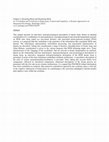
This chapter presents an innovative neuropsychological description of dream sleep. Based on detai... more This chapter presents an innovative neuropsychological description of dream sleep. Based on detailed consideration of a combination of neuroanatomical, neurophysiological and neurodevelopmental research on REM state sleep (rapid eye movement dreams), and associated ponto-geniculo-occipital (PGO) activity, it is proposed that the cerebellum is the generator of the information that constitutes REM state dreams. The information representation, information processing, and experiential characteristics of dreams are described. Taking into consideration a range of theories, including those of Freud, Jung, and Allan Hobson, consideration is given to the various purposes that REM dreaming might serve. Some characteristics of the 'language of the cerebellum' that are relevant to dream interpretation are outlined. Based on the relationship between neurological, neuropsychological, and psychological descriptions of dream sleep, an innovative integrated neuropsychological description of the REM dream sleep is presented, in terms of the basic brainstem-cerebellum-cerebrum architecture. A speculative description of the roles of various neurotransmitters/modulators is provided. Then, taking into account limbic level components, followed by lateralized components, elaborated descriptions of the dream process are presented with the five and seven systems architectures. It is argued that PGO/REM related information flow from cerebellum to cerebrum, that cannot be controlled or ignored by the cerebrum, plays a vital role in the cognitive dimension of homeostasis, by contributing to the correction maladaptive internal models and cognitive error within the cerebrum.

This chapter emphasises the importance of dialogue between System-1 and System-2 in the hybrid co... more This chapter emphasises the importance of dialogue between System-1 and System-2 in the hybrid control operations of the multi-level psyche. It considers psychological data and theory regarding: imagination (including inner speech); sub-programming, in-the-head rehearsal; executive functions, (simulation, planning, working memory, and repetitive thought); problem solving, creativity and intuition (fuzzy-trace theory and gist); unintended thought (day-dreaming mind-wandering, introspection, intrusive thoughts, and voices-in-the-head). Where appropriate, reference is made to neurological literature, including that pertaining to cerebellar function. The systems related characteristics of these processes and phenomena are described in terms of the neuropsychological architecture, with particular reference to dialogue between the System-1 type thinking of cerebellar mind, and the System-2 type thinking of cerebral mind. A substantial part of this chapter is devoted to the very important process of attention, including: selective attention (advantages and disadvantages), attention to outer and inner worlds, attention shifting, attention interruption, attention capture, and unconscious preattentive processes. Also considered are: the roles of the cerebellum, cerebrum, and neurotransmitter/modulators in attention shifting; the rhythmic ebb and flow of information from cerebellum to cerebrum; and, lateralized cerebral function, lateralised information transmission through the brain stem, and attention in the control of a balanced dialogue between the cerebellum and cerebrum.
The concepts of mental health and mental disorder are outlined with reference to DSM-5, RDoC, and... more The concepts of mental health and mental disorder are outlined with reference to DSM-5, RDoC, and the principle of homeostasis. Symptomatic aspects of ADHD, ASD, schizophrenia (with auditory and visual hallucinations), REM sleep behaviour disorder, temporal lobe epilepsy, and Tourette syndrome, are considered from a neurophysiological perspective, in terms of neurotransmitters/modulators, cerebellum, cerebrum, and cerebellar-cerebral interaction. Cerebellar and cerebral contributions to these disorders are described in terms of the concept of neurophysiological systems imbalance, and interpreted in terms of the operational features of the neuropsychological architecture.
Papers by Eric Parkins
Routledge eBooks, Oct 13, 2021
Biological Cybernetics, Aug 29, 1997
There have been various descriptions of cerebellar function in terms of adaptive control. However... more There have been various descriptions of cerebellar function in terms of adaptive control. However, a number of recent publications have indicated that the cerebellum is involved in a range of cognitive processes including pure cognitive activity. This review paper relates the concept of cerebellar adaptive control to cerebellar cognition, and explores the relative roles of the cerebrum and cerebellum by considering the issue of representation and processing of information in a systematic manner. It is suggested that the cerebellar cortex and cerebral cortex facilitate two fundamentally different types of information representation and processing which are complementary and which should be able to reciprocally evaluate and correct each other, thereby providing the basis for a self-correcting adaptive control system.
Routledge eBooks, Oct 13, 2021
Routledge eBooks, Oct 13, 2021
Routledge eBooks, Oct 13, 2021











Uploads
Videos by Eric Parkins
The architecture provides a framework for a principled integration of the three major branches of psychology, From Skinner's behaviourist theory, through Piaget's cognitive/developmental psychology, to Freud's psychodynamic psychology of the unconscious and dreaming.
A detailed explanation of the architecture, addressing the important role of the dialogue between the cerebellum and cerebrum in psychological processes and neuropsychiatric disorders is provided in:
'Cerebellum and Cerebrum in Homeostatic Control and Cognition: A Systems Approach to an Integrated Psychology' Routledge.
Books by Eric Parkins
Book Chapters by Eric Parkins
Papers by Eric Parkins
The architecture provides a framework for a principled integration of the three major branches of psychology, From Skinner's behaviourist theory, through Piaget's cognitive/developmental psychology, to Freud's psychodynamic psychology of the unconscious and dreaming.
A detailed explanation of the architecture, addressing the important role of the dialogue between the cerebellum and cerebrum in psychological processes and neuropsychiatric disorders is provided in:
'Cerebellum and Cerebrum in Homeostatic Control and Cognition: A Systems Approach to an Integrated Psychology' Routledge.